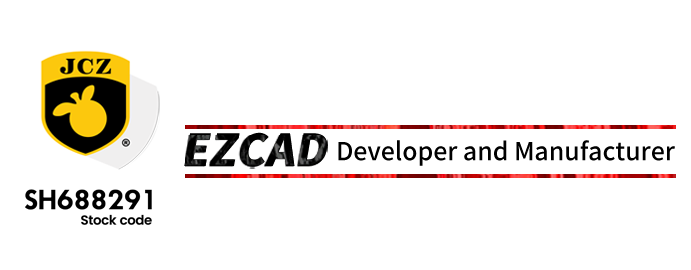Introduction
3D printing technology has transformed the manufacturing and design industries by offering fast, efficient, and highly customizable solutions for prototyping and production. Two of the most popular 3D printing methods, SLA (Stereolithography) and SLM (Selective Laser Melting), require specialized software to ensure high-quality prints. This article delves into the best 3D printing software and programs for SLA and SLM, highlighting their features, advantages, and applications.
3D Printing Software for SLA and SLM
What is SLA and SLM?
SLA and SLM are two different 3D printing technologies that use lasers to create 3D objects from digital files. SLA uses a liquid resin that is cured by a laser beam layer by layer, while SLM melts metal powder with a laser to create solid objects. Both require highly specialized software to control the printing process and ensure precision.
3D Printer Programs for SLA and SLM
The software used for SLA and SLM printing is designed to handle the complexities of these technologies. It ensures that the model is sliced correctly, layers are printed with high precision, and the final object meets all design specifications. These programs offer a wide range of features, including material selection, orientation optimization, support generation, and print time estimation.
Key Features of SLA 3D Printing Software
Designing for SLA
SLA 3D printing software allows users to create detailed designs with intricate geometries. Programs for SLA typically support CAD (Computer-Aided Design) files and convert them into formats compatible with 3D printers. Some advanced software for SLA can also optimize the model for the best print quality, automatically adjusting support structures to reduce the risk of failure.
Material and Resin Management
One of the main features of SLA software is its ability to manage resin settings. Since different resins have unique properties, SLA printing programs allow users to adjust parameters such as exposure time and laser intensity to match the resin type. This ensures optimal curing for the best print results.
Software for 3D Printing in SLA
Popular software solutions for SLA include programs like Chitubox, PrusaSlicer, and Photon Workshop. These programs are specifically designed to optimize the printing process for SLA printers, offering features such as automatic support generation, slicing, and advanced settings for resin-based printing.
SLM 3D Printing Software
Designing for SLM
SLM software is used to optimize metal 3D printing for maximum efficiency and accuracy. This includes managing settings such as layer thickness, laser power, and print orientation to ensure that metal parts are printed with the desired density and precision. SLM programs are often more complex than SLA software due to the additional challenges of working with metal materials.
Metal Powder Management
In SLM, the laser melts metal powder layer by layer, and the software must calculate how much material to use and how to handle the thermal effects of the laser on the powder. The best SLM software can adjust parameters in real-time to compensate for temperature changes, ensuring consistent quality throughout the print process.
Popular SLM Software
Well-known SLM programs include 3DXpert, Magics by Materialise, and SolidWorks integrated solutions for metal printing. These programs offer robust tools for optimizing metal 3D printing, including support structures, part orientation, and toolpath generation.
3D Printer Software: Choosing the Right Program
Factors to Consider When Choosing 3D Printer Software
When selecting a 3D printer program for SLA or SLM, it’s important to consider several factors. These include compatibility with your printer model, ease of use, customization options, and the type of material you’re working with. Whether you are designing for SLA’s precision resin prints or the durability of SLM metal prints, the right software can greatly influence the outcome of your project.
Design 3D Print Features
Many 3D printer programs allow you to design 3D prints directly within the software or import designs from other CAD tools. These programs provide the necessary tools to tweak the design, scale it, and create supports for the model. Whether you are designing intricate jewelry or large-scale engineering parts, having a reliable design program is essential.
Advantages of Using Specialized 3D Printer Software
Precision and Efficiency
Both SLA and SLM technologies require highly precise software to ensure the final product meets specifications. Advanced slicing algorithms, support structure optimization, and material management allow these programs to produce highly accurate 3D prints. For industries such as aerospace, automotive, and healthcare, precision is paramount.
Customization and Flexibility
Another advantage of using dedicated 3D printing software is the ability to customize prints for specific requirements. Whether you need to print complex geometries or work with specialized materials, these programs offer flexible options to tweak and adjust settings to suit your needs.
Faster Prototyping and Production
With accurate slicing and efficient print time estimation, SLA and SLM software can help speed up the prototyping and production process. These programs optimize the design and printing process, allowing you to produce high-quality prototypes and end-use parts in less time.
Conclusion
SLA and SLM 3D printing software are indispensable tools for creating high-quality, precise prints from a range of materials. Whether you are working with resins for SLA printing or metals for SLM, choosing the right software ensures the best results. With advanced features for material management, slicing, and support generation, these programs help streamline the 3D printing process and enable users to achieve their design goals with greater efficiency and accuracy.
由用户投稿整理稿件发布,不代表本站观点及观点,进行交流学习之用,如涉及版权等问题,请随时联系我们(yangmei@bjjcz.com),我们将在第一时间给予处理。
Post time: Nov-11-2024







